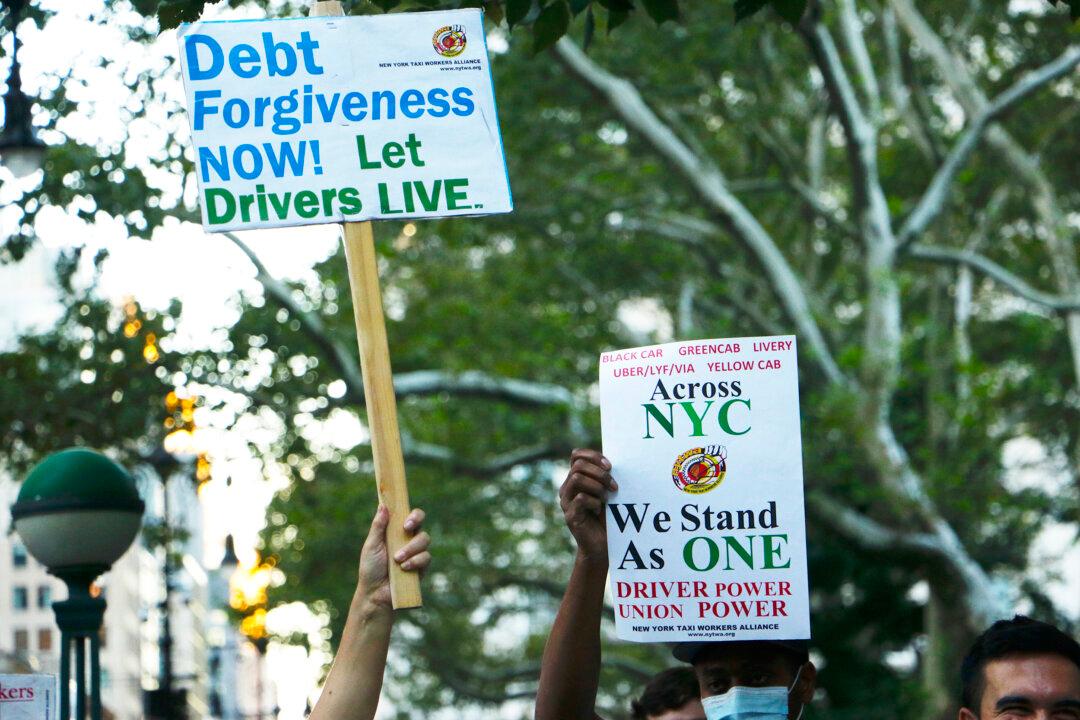Saying they are drowning in debt, the Yellow Cab drivers of New York have taken to the streets outside City Hall to protest against what they see as insufficient help from the government.
New York City has a $65 million Medallion Relief Plan (MRP) that provides a $20,000 down payment to help restructure taxi-medallion-related loans on top of $9,000 in monthly debt-payment assistance.
